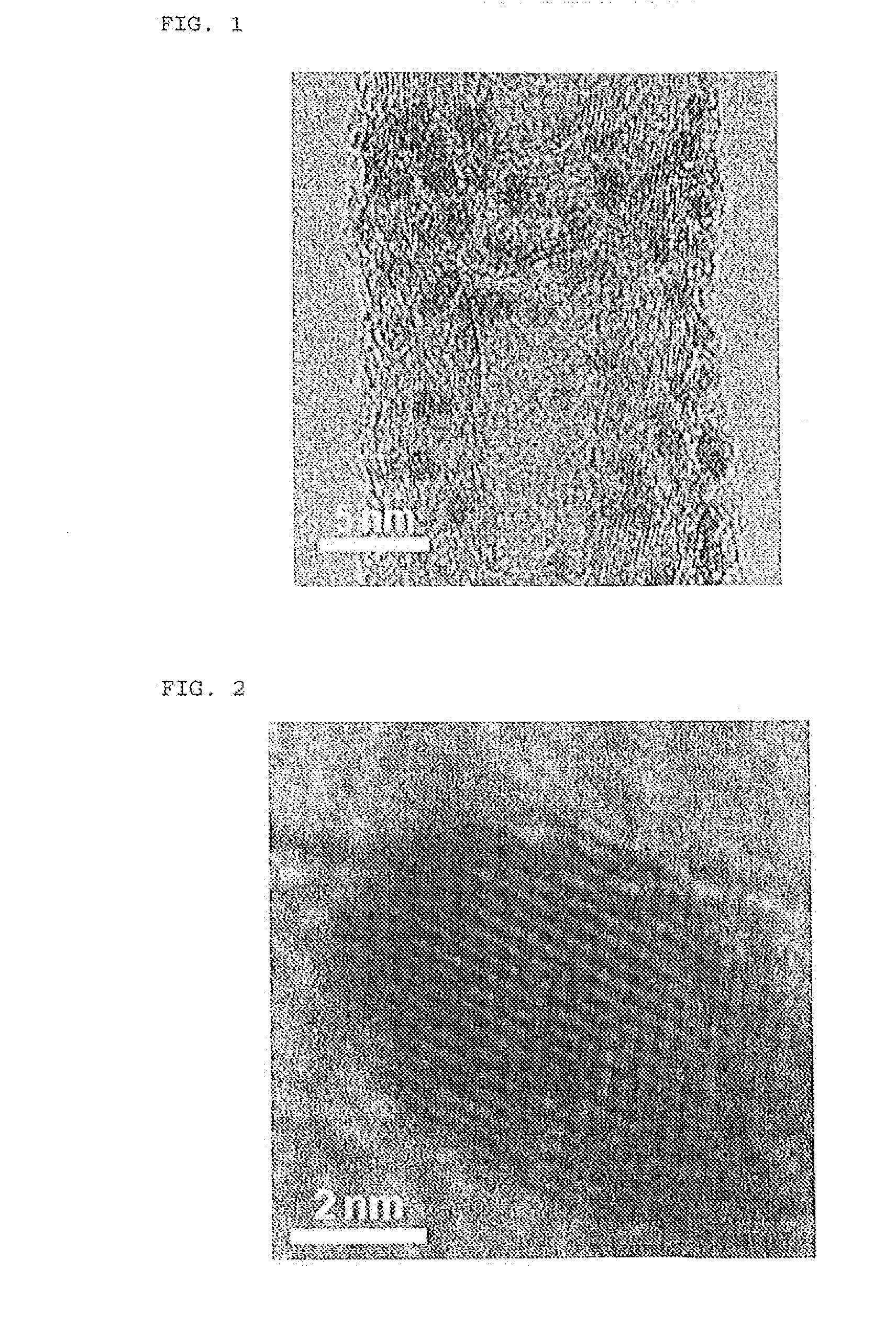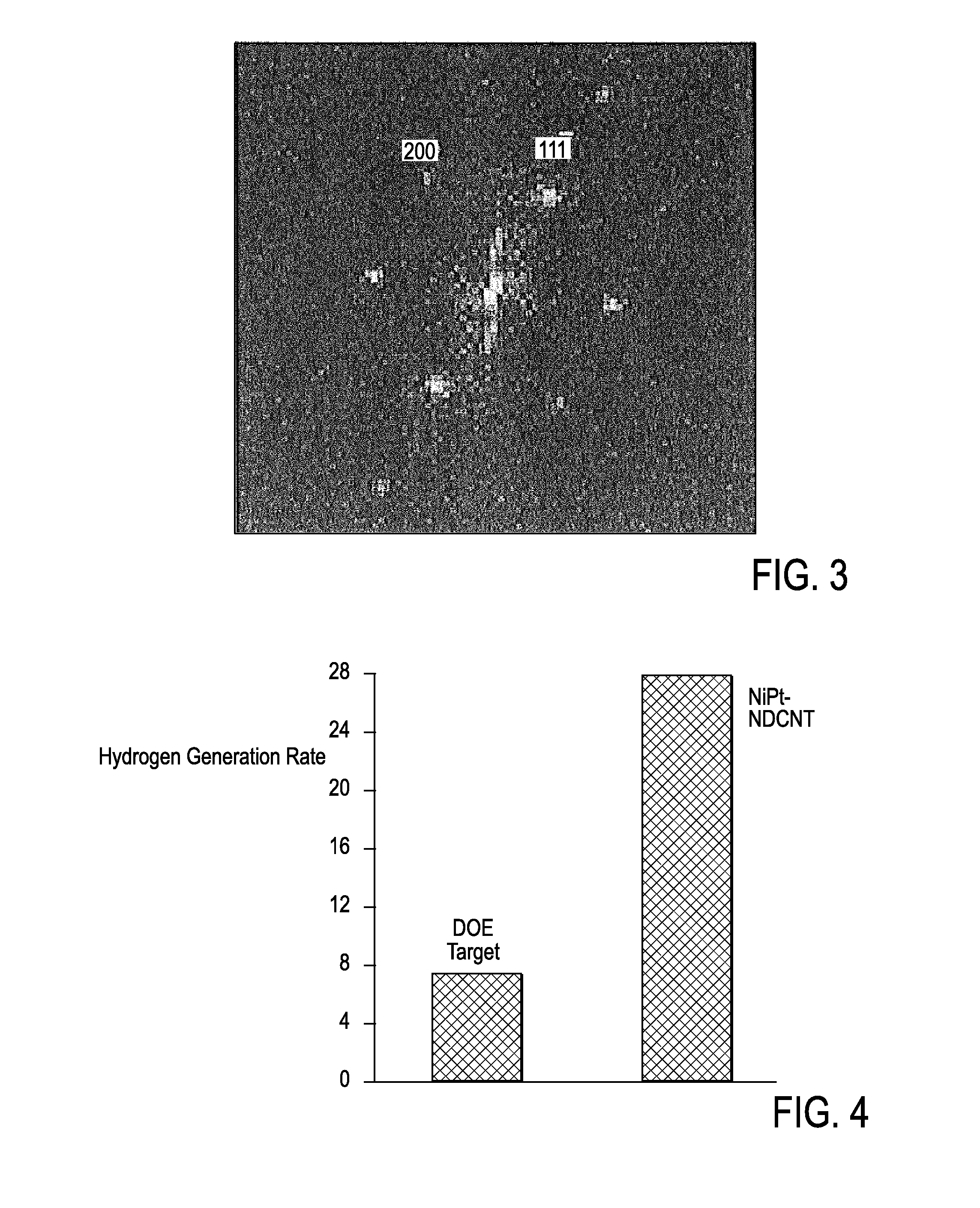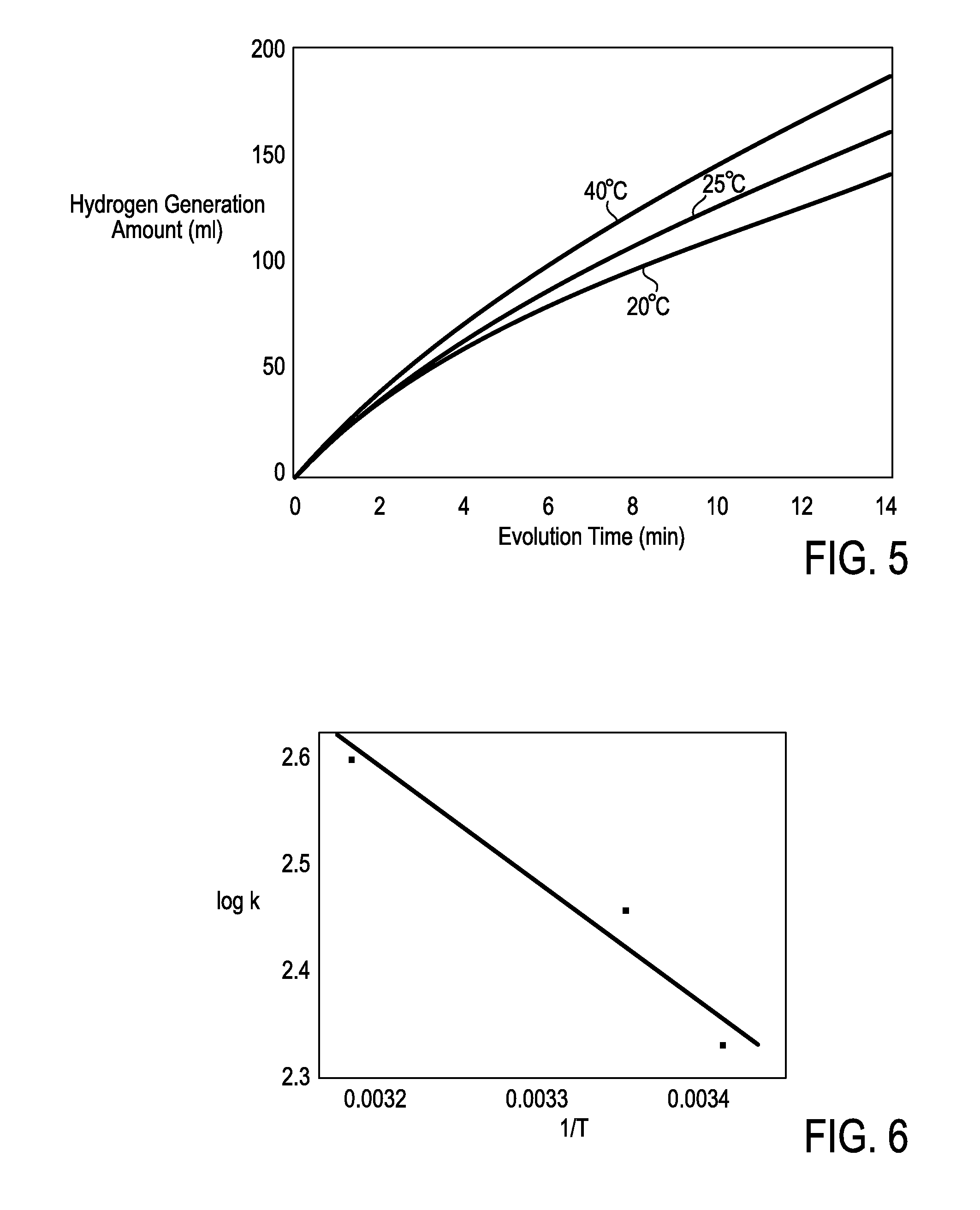Double Metal-Carbon Nanotube Hybrid Catalyst and Method for Preparation Thereof
a metal-carbon nanotube and hybrid catalyst technology, applied in the field of double metal-carbon nanotube hybrid catalysts, can solve the problems of catalysts with low catalytic activity, time and economic constraints, etc., and achieve the effect of high-speed hydrogen generation
- Summary
- Abstract
- Description
- Claims
- Application Information
AI Technical Summary
Benefits of technology
Problems solved by technology
Method used
Image
Examples
example 1
Amount of Hydrogen Generated Per Minute
[0042]An amount of hydrogen per minute generated from an aqueous NH3BH3 solution by the inventive double metal-carbon nanotube hybrid catalyst (often abbrev. to “NiPt-NDCNT”), that is, a hydrogen generation rate was determined and compared to a target amount of hydrogen according to the US Department of Energy (DOE) (often abbrev. to “DOE Target”). Results thereof are shown in FIG. 4.
[0043]For this purpose, a temperature of 0.5 wt. % NH3BH3 in 50 mL of aqueous solution was set to 25° C. and 10 mg of the Ni0.72Pt0.28-carbon nanotube hybrid catalyst prepared in Preparative Example 2 was added to the above solution. An amount of hydrogen generated from the prepared mixture was measured using a gas flow meter.
[0044]Referring to FIG. 4, it can be seen that the inventive double metal-carbon nanotube hybrid catalyst generates hydrogen considerably more than the DOE target.
example 2
Hydrogen Generation Speed Depending on Temperature
[0045]A speed of generating hydrogen from an aqueous NH3BH3 solution by the inventive double metal-carbon nanotube hybrid was measured with different temperatures.
[0046]For this purpose, a temperature of 0.5 wt. % NH3BH3 in 50 mL of aqueous solution was set to 20° C., 25° C. and 40° C., respectively, and 10 mg of the Ni0.72Pt0.28-carbon nanotube hybrid catalyst prepared in Preparative Example 2 was added to each of the above solutions. A hydrogen generation amount along evolution time was measured using a gas flow meter and results thereof are shown in FIG. 5.
[0047]Referring to FIG. 5, it can be seen that the hydrogen generation speed of the Ni0.72Pt0.28-carbon nanotube hybrid catalyst according to the present invention increases as the temperature is elevated.
example 3
Hydrogen Generation Speed Depending on Temperature
[0048]FIG. 6 illustrates an Arrhenius plot drawn up based on hydrogen generation characteristics of the Ni0.72Pt0.28-carbon nanotube hybrid catalyst prepared in Preparative Example 2 depending on temperature.
[0049]Applying the Arrhenius plot in FIG. 6 as well as the following Arrhenius equation, an activation energy of the inventive Ni0.72Pt0.28-carbon nanotube hybrid catalyst was calculated to be 9.7 kJ / mol.
Arrhenius Equation: ln k=ln A−Ea / RT
[0050]wherein k is a rate constant, A is a frequency factor, Ea is an activation energy, R is a gas constant, and T is a Kelvin temperature (K).
PUM
| Property | Measurement | Unit |
|---|---|---|
| thickness | aaaaa | aaaaa |
| pressure | aaaaa | aaaaa |
| temperature | aaaaa | aaaaa |
Abstract
Description
Claims
Application Information
 Login to View More
Login to View More - R&D
- Intellectual Property
- Life Sciences
- Materials
- Tech Scout
- Unparalleled Data Quality
- Higher Quality Content
- 60% Fewer Hallucinations
Browse by: Latest US Patents, China's latest patents, Technical Efficacy Thesaurus, Application Domain, Technology Topic, Popular Technical Reports.
© 2025 PatSnap. All rights reserved.Legal|Privacy policy|Modern Slavery Act Transparency Statement|Sitemap|About US| Contact US: help@patsnap.com



